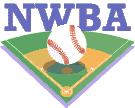| T O P I C R E V I E W |
| Rapid |
Posted - 08/20/2018 : 08:00:38
In a previous post right before summer baseball took off, I shared some of our thoughts on in-season training. With the summer winding down and fall classes in full swing for most people, I thought it might be a good time to share some of our off season training thoughts.
1. If you threw a ton of innings and/or pitches, this time of year can be a good time to take some rest and to get in the weight room. Unless you are preparing for a big showcase, give your arm a break. Giving the arm time off from throwing can allow tissues (ligaments, tendons, capsules, etc,) to return to normal resting lengths. Capsules and tendons can often get stretched out and cranky after a long season of throwing. In our early offseason programming at Rapid, we take the time to include range of motion restoration drills in our arm care portion. These types of drills can relieve nagging injuries and are important to include, especially with aggressive offseason training.
2. This is the time to focus on strength and weight gain in players seeking these qualities. When youíre playing multiple games per day, its much more difficult to put on weight as you expel greater amounts of energy. During the fall and winter both volume and intensity can be increased in weight training. Gains in strength and size are much more manageable with increases in workload as long as the athlete is eating appropriately. (Check this post out on eating for weight gain http://www.nwgabaseball.org/snitz/topic.asp?TOPIC_ID=104787)
3. Be wary of aggressive velocity and weighted ball throwing programs. While they can be effective, there has been research showing that the concomitant increase in layback or external rotation can cause issues in those athletes who cannot control the range of motion effectively. If the athlete doesnít have the strength and stability to control these new ranges of motion, subsequent issues can arise. The above two points should ALWAYS be addressed before more aggressive methods are sought after, ESPECIALLY in developing athletes. In other words, the athlete should train for strength and control of their natural range of motion first. If you canít deadlift 100 pounds but you throw 85 at age 14, you could be writing checks that the body may not be able to cash down the line. Strength, mass, and proper movement mechanics are usually the lowest hanging fruit and can go a long way in velocity increases.
We hope this is helpful! Have a great week, and as always feel free to comment with questions or topic requests!
All the best,
The Rapid Team
www.go-rapid.com
Andrew Gordon, MS, CSCS
Andrew.Gordon@go-rapid.com
|
|
|




